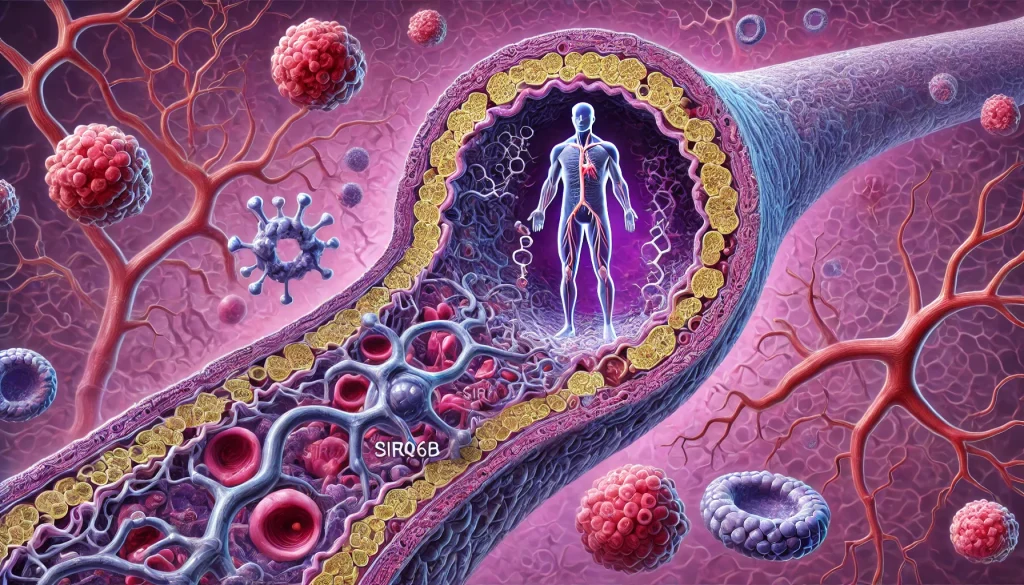Study on miR-125b, SIRT6, and STAT3 in Atherosclerosis
In a recent study published in Reports of Biochemistry & Molecular Biology, researchers explored the roles of microRNA-125b (miR-125b), Sirtuin 6 (SIRT6), and Signal Transducer and Activator of Transcription 3 (STAT3) in atherosclerosis, a condition characterized by the buildup of fats, cholesterol, and other substances in and on the artery walls. This study, conducted by a team from Lorestan University of Medical Sciences, aimed to understand how these molecules interact and their potential as biomarkers for atherosclerosis.
The researchers found that miR-125b levels were significantly higher in patients with atherosclerosis compared to healthy controls. This finding aligns with previous studies that have identified miR-125b as a key player in cardiovascular diseases. For instance, miR-125b has been shown to regulate inflammatory processes and lipid metabolism, both of which are crucial in the development of atherosclerosis. Elevated miR-125b levels have also been linked to increased plaque formation in arterial walls, suggesting that targeting miR-125b could be a potential therapeutic strategy for atherosclerosis.
Interestingly, the study did not find significant changes in the expression levels of STAT3 and SIRT6 between the patient and control groups. This contrasts with other research that has highlighted the roles of these molecules in cardiovascular health. For example, STAT3 is known to regulate various cellular processes, including inflammation and cell growth, which are critical in atherosclerosis development. Inhibition of the STAT3 signaling pathway has been shown to reduce atherosclerotic lesion formation in experimental models, indicating its potential as a therapeutic target.
Similarly, SIRT6 has been implicated in metabolic regulation and longevity. It is known to suppress the expression of pro-inflammatory cytokines, which are key players in atherosclerosis. Reduced SIRT6 activity has been linked to increased oxidative stress and endothelial dysfunction in atherosclerosis patients. Enhancing SIRT6 expression has been shown to mitigate atherosclerosis progression in experimental models, suggesting that it could be a valuable target for therapeutic interventions.
Despite the lack of significant changes in STAT3 and SIRT6 expression levels in this study, the researchers found that STAT3 exhibited high diagnostic power for identifying individuals at risk of heart disease and hypertension. This finding suggests that STAT3 could serve as a valuable biomarker for detecting atherosclerosis and related risk factors. The study also found significant correlations between miR-125b and certain biochemical parameters, such as atherogenic indexes and creatinine levels, further highlighting its potential as a diagnostic marker.
The interaction between miR-125b and SIRT6 is particularly interesting. Previous studies have shown that miR-125b can target the SIRT6 gene, leading to apoptosis and cellular senescence in cancers. In the context of atherosclerosis, miR-125b downregulates SIRT6 expression, exacerbating disease progression. Restoring SIRT6 levels by inhibiting miR-125b could enhance vascular health and mitigate atherosclerosis, offering a potential therapeutic strategy.
Moreover, the study found that miR-125b had significant correlations with atherogenic indexes and creatinine levels, suggesting its involvement in lipid metabolism and kidney function. This finding is consistent with other research that has identified miR-125b as a regulator of lipid metabolism in vascular cells. Elevated miR-125b levels have been associated with increased risk factors for atherosclerosis, including higher LDL cholesterol and triglycerides.
In contrast, SIRT6 showed significant correlations with HDL cholesterol and creatinine levels, indicating its role in lipid metabolism and kidney function. SIRT6 has been shown to modulate lipid metabolism and decrease the formation of atherosclerotic plaques. Enhancing SIRT6 expression could lower LDL levels and improve vascular health, making it a promising target for therapeutic interventions.
The study’s findings on the diagnostic potential of STAT3 are also noteworthy. Higher STAT3 expression levels were observed in individuals with a history of heart disease and hypertension, suggesting its role in cardiovascular risk assessment. The researchers used ROC curve analysis to demonstrate STAT3’s high diagnostic power, indicating its potential as a biomarker for identifying individuals at risk of heart disease and hypertension.
In summary, this recent study provides valuable insights into the roles of miR-125b, SIRT6, and STAT3 in atherosclerosis. While miR-125b levels were significantly higher in atherosclerosis patients, the expression levels of STAT3 and SIRT6 did not show significant changes. However, STAT3 exhibited high diagnostic power for identifying individuals at risk of heart disease and hypertension, highlighting its potential as a biomarker. The study also found significant correlations between miR-125b and biochemical parameters, suggesting its involvement in lipid metabolism and kidney function. These findings underscore the importance of further research to elucidate the complex interactions between these molecules and their potential as therapeutic targets for atherosclerosis.

